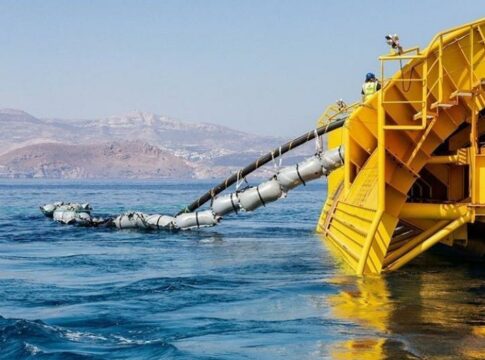The historic Plaka bridge, which collapsed when torrential rains swelled and accelerated the flow of the Arachthos River, in mountainous northwest Greece, has been fully rebuilt with the same techniques used by builders in the pre-industrial age, stones found in the district but with contemporary mortar.
The 19th century stone one-arch bridge, billed as the largest of its kind in the Balkans, collapsed on Feb. 1, 2015.
The central stone, known as the “Tholite”, or, “key stone” and “sacred stone”, connecting the two sides of the arch in the middle was laid just days ago.
The scaffolding on the rebuilt arch bridge will remain standing for roughly a month, until the mortar solidifies.
Dozens of stone masons, craftsmen, scaffolders and machinery operators worked on the project, under the direction of architects and builders Christos Iliopoulos and Alexandros Papakostopoulos.
The bridge links the uplands of northwest Thessaly with Epirus province in the rugged Tzoumerka mountains. In the 19th century it was a border crossing between the Kingdom of Greece, in the south, and the Ottoman territory in the north.













